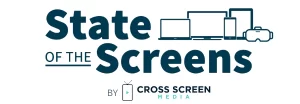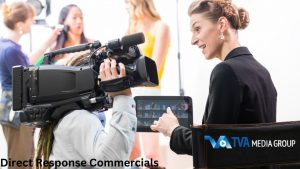Various advertising mediums allow entrepreneurs to expand their reach in the audience and position the right marketing strategies to promote their brand, sell their products, and generate high ROI. The costs of investing in advertising campaigns are undeniably expensive. But at the end of the day, the methods produce an ultimate pay-off.
Nevertheless, the question always hangs in the balance. How much does it cost to produce a TV, radio, or social media advertising campaign?
Let’s look at several factors that account for what influences the production expenses of commercials.
How Much Does It Cost To Produce A Commercial?
A smart business person would always make sure that all company expenses are budget-allocated, and investment plans are strategically calculated.
Traditional forms of advertising, such as TV and radio, are often compared to digital methods like online and social media marketing. Naturally, there’s a distinction between these advertising strategies in terms of production costs and a few other factors.
TV Advertising
There are two stages to TV advertising: design and production.
The design phase involves the creation of creative content to be included in local or national TV advertisements. TV advertisers often have the resources for the design team to help provide services like developing the script and hiring actors.
The production phase involves the creation of commercial videos. The filming flow starts on the initial shoot, the scenes are edited to fit the time length, and then the commercial video is reviewed for final approval.
Planning the commercial broadcast between local or national scopes brings us to one of the variables that affect advertising costs. TV commercial rates vary in different regions, so it’s important to identify the scope of your audience, whether you’re targeting local or national consumers. By doing this, you can position your TV ad production accordingly and keep your expenses within the marketing campaign’s needs.
The production costs of a TV commercial, including half-hour infomercials, are estimated at $20,000 to $1million, depending on the quality and length of the ad.
Two other factors that affect the costs of TV commercials are the network and time of airing. Primetime rates between 6:00 to 10:00 pm are the highest. These are the peak hours of television entertainment, and when most consumers are watching. If a product targets the market audience within these hours, the media ad spend alone has an average going rate of $350,000 per 30-second national TV spot. On the other hand, daytime advertising ranges around $150,000 per 30-second national TV spot. Add that up to the production expenses to calculate the total costs.
Radio Advertising
Some people are not aware of the impact of utilizing the radio advertising medium. Others even claim that it’s merely an expensive marketing effort. In fact, the radio reaches a wide audience of potential consumers, which is above 90% of American adults.
Radio advertising production includes scriptwriting, voice talent, and audio/video editing. Radio advertisements are sometimes produced with videos because of social media sharing, which is incredibly strategic. The production costs range between $300 to $2,000, plus the weekly airtime costs that vary between $200 to $6,000 depending on location.
A successful radio commercial campaign has to be positioned at the right time of day while considering the desirability level and engagement of listeners:
- In the morning between 6:00 to 10:00 am, people are taking the morning drive, which the radio advertisers regard as the most desirable slot and have the highest listener engagements.
- Midday between 10:00 am to 3:00 pm has a medium level of engagement with a lesser audience.
- The afternoon to evening break between 3:00 to 7:00 pm also has a high-level of engagement and desirability with the radio audience.
- Evening sessions between 7:00 pm to 12:00 am has a low response rate from the radio listeners. But, advertising companies can take this advantage to get discounted rates from radio stations.
- The off-hours between 12:00 to 6:00 am have the lowest interaction level from the radio listeners. Advertisers who take this spot offer services during this time of the day, like taxi companies and 24-hour diners.
There are situations when it’s best to ditch radio advertising. For example, products within the niche market are less likely to benefit from this medium. A niche is a target-based market, which not one of the strengths of radio advertising. There is a wide demographic of people who listen to radio stations, making it impossible to filter the interest-based listeners. However, offering location-based services catches the interest of the radio audience.
Social Media Advertising
The process of social media marketing often involves having an established website where the campaign will lead the audience to establish brand awareness and generate sales conversions. So, from the social media platform, the campaign that consists of the ad copy and image or video commercials drive traffic toward the website to encourage the audience to take action.
Extensive social media advertising and campaign management services range from $1,000 to $3,000 per month, ad spends not included.
Campaign management service rates are paid to social media marketing agencies who specialize in this advertising medium. They can provide copywriting, ad strategy, ad monitoring, and ad management tools to ensure the campaign’s quality and success. Professional social media campaign managers can calculate the costs per click, impression, like, follow, view, engagement, download, or any action taken by the audience.
The ad spend refers to daily ad rates of various social media platforms like Facebook, Instagram, Google, YouTube, LinkedIn, Twitter, and more. The recommended daily ad spend rates range from $200 to $1,000 to achieve optimal results of the advertising campaign.
Extend Your Reach With Multiple Advertising Campaigns
Advertising on TV, radio, and social media allows you to explore your reach among various audience groups with the right strategies. Commercials aired on multiple outlets provide a faster method of building brand awareness, increasing sales, and achieving beyond the prospected ROI. Combining two or three marketing mediums might sound like a large-scale campaign. But even with high marketing costs, the results outweigh the risk of investment. As they say, either go big or go home.
Are you interested in running commercials in multiple mediums? Check out TVA Media Group’s MEDIAblitZ! media buying strategy today.



